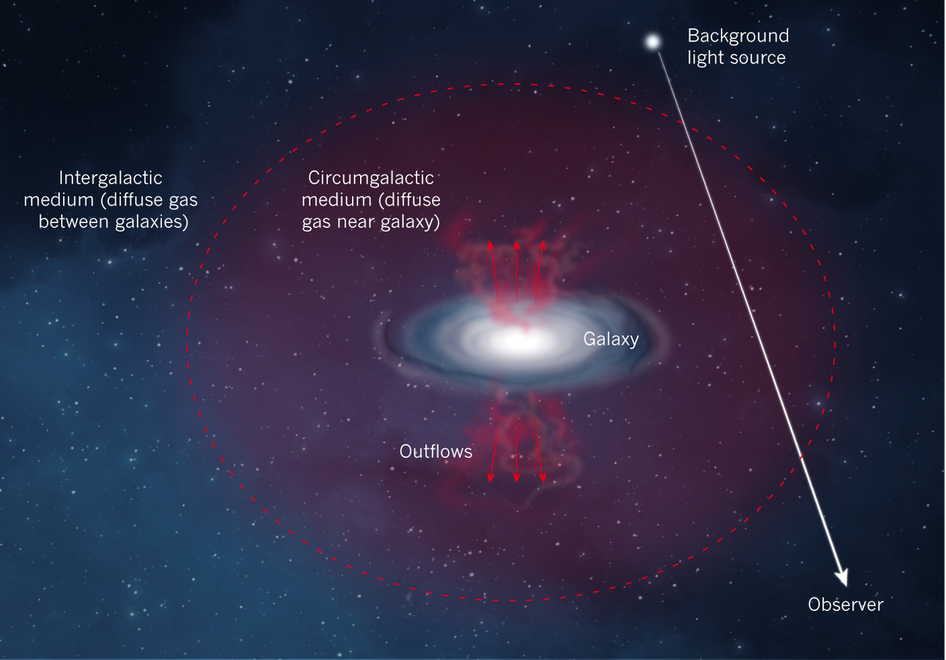The Geometry and Kinematics of Circumgalactic Gas [slides]
David Caro building, Level 7 conference room
More information
-
 Dr Nikki Nielsen, Postdoctoral fellow
Dr Nikki Nielsen, Postdoctoral fellow
Swinburne University
Email: nikolenielsen[at]swin.edu.au
Abstract
The baryon cycle is key to understanding the observed global properties of galaxies and plays a large part in governing galaxy evolution. Signatures of the baryon cycle such as IGM accretion, minor mergers, and stellar-Driven outflows and fountains are best probed in gaseous halos, i.e., the circumgalactic medium (CGM). I use Keck, VLT, and HST spectra of background quasars to examine the geometric and kinematic properties of the multiphase, metal-enriched CGM of galaxies at 0.08<z<1.0, focusing on the low-ionization MgII and high-ionization OVI absorption doublets. By examining the velocity dispersions of absorbers in the context of the host galaxy color and orientation, I find that the low-ionization gas strongly traces expected baryon cycle processes. In contrast, high-ionization gas tends towards broader kinematics independent of galaxy color and orientation. These results suggest that the low- and high-ionization phases may trace different components of the CGM and provide observational constraints on simulations to accurately model the role that the baryon cycle plays in galaxy evolution.
